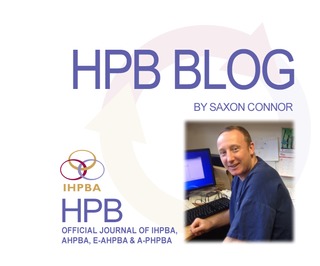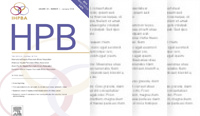International Hepato-Pancreato-Biliary Association
HPB Blog, September 2014

In this month’s issue of HPB, it is not hard to see why the recently released impact factor has continued its upward trend and is now above 2 for the first time in the Journal’s history. There is a wide spectrum of HPB diseases covered in this month’s issue. Firstly, two internationally renowned French liver units describe a series of 62 patients presenting with hepatic adenoma and their subsequent management over a 23 year time period. The outcomes indicate that, in expert hands, resection via an open or selective laparoscopic approach can be performed safely. At the other end of the spectrum in terms of incidence, Wu et al describe a series of 5243 patients undergoing cholecystectomy and aimed to develop a model to predict gangrenous cholecystitis (GC). GC is a severe life threatening form of cholecystitis associate with increased technical operative difficulty, perioperative morbidity and mortality. Of the 5243 patients studied 351 (7%) had GC. Factors predicting GC were age >45 years, heart rate >90 beats/min, white count >13 and gallbladder wall thickening (although this was not defined as a numerical variable). Interestingly, neither C-reactive protein nor diabetes were assessed as potential predictors. From these factors, the authors created a 5 point scoring system which had an area under the ROC curve of 0.74. If the score was 0 then there was a 2% risk of GC compared to a 63% chance if the score was 5. The reason preoperative prediction is so important is the that the outcomes for GC were truly frightening with 1.1% risk of bile duct injury and 17% risk of complication of which 14% were Dindo-Clavien grade 3-4. Thus the importance of recognising GC preoperatively and ensuring an experienced surgeon is available to deal with this problem is paramount. These data need promulgated to our non HPB colleagues who are dealing with patients requiring acute cholecystectomy.
The third paper to highlight in this month’s issue relates to a study from Franssen et al. The authors present a series of 176 patients who presented with HCC and were followed until death or for at least 10 years. Only 28 (16%) of patients survived 10 years. Factors associated with 10 year survival were absence of vascular invasion, absence of blood transfusion and recurrence greater than 2 years from the initial surgery. The authors should be congratulated on the quality and completeness of their data.
To view the table of contents of this issue, click here.
Saxon Connor
Corporate Partners
If you are interested in becoming a Corporate Partner of the IHBPA please contact industry@ihpba.org
Find out more


